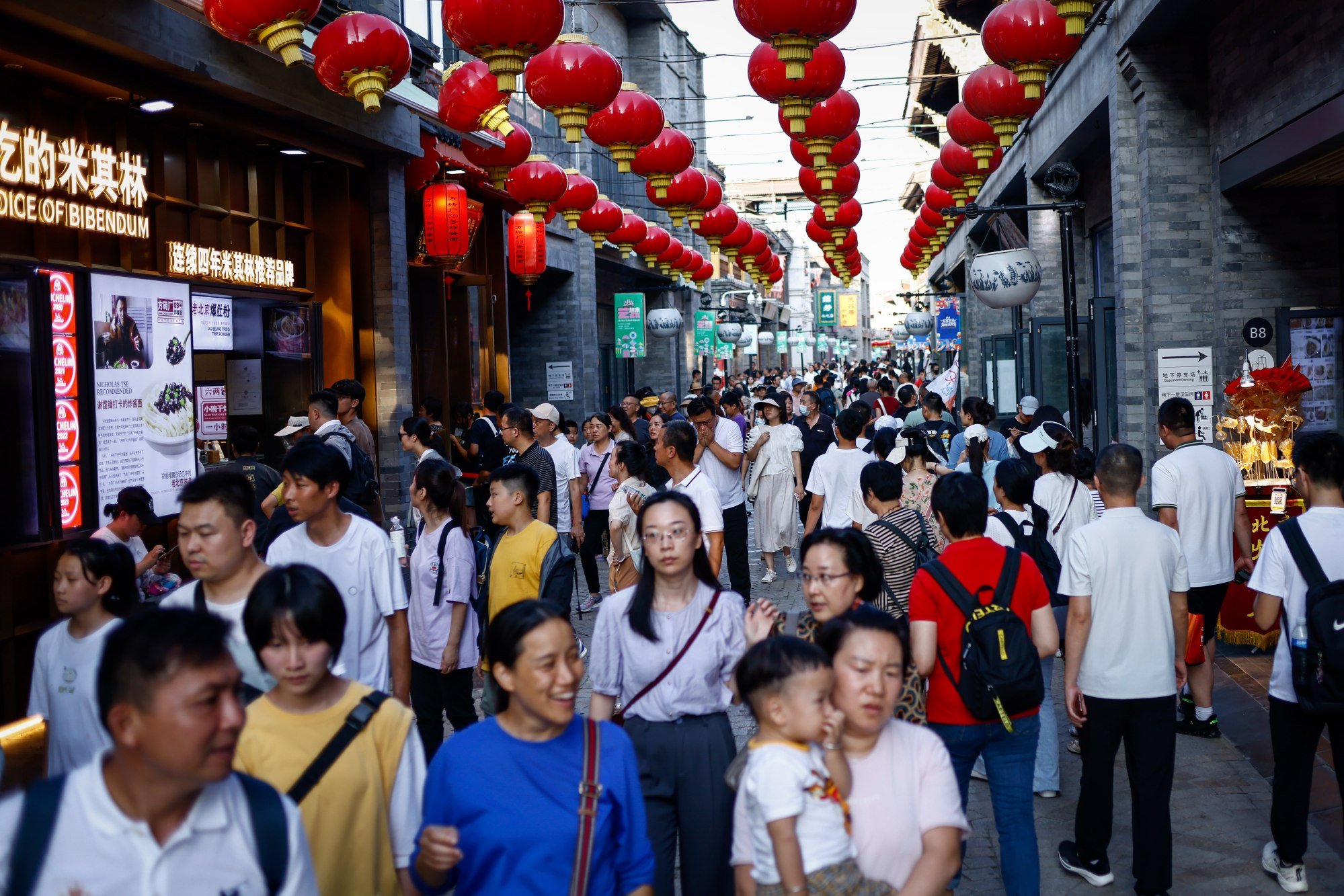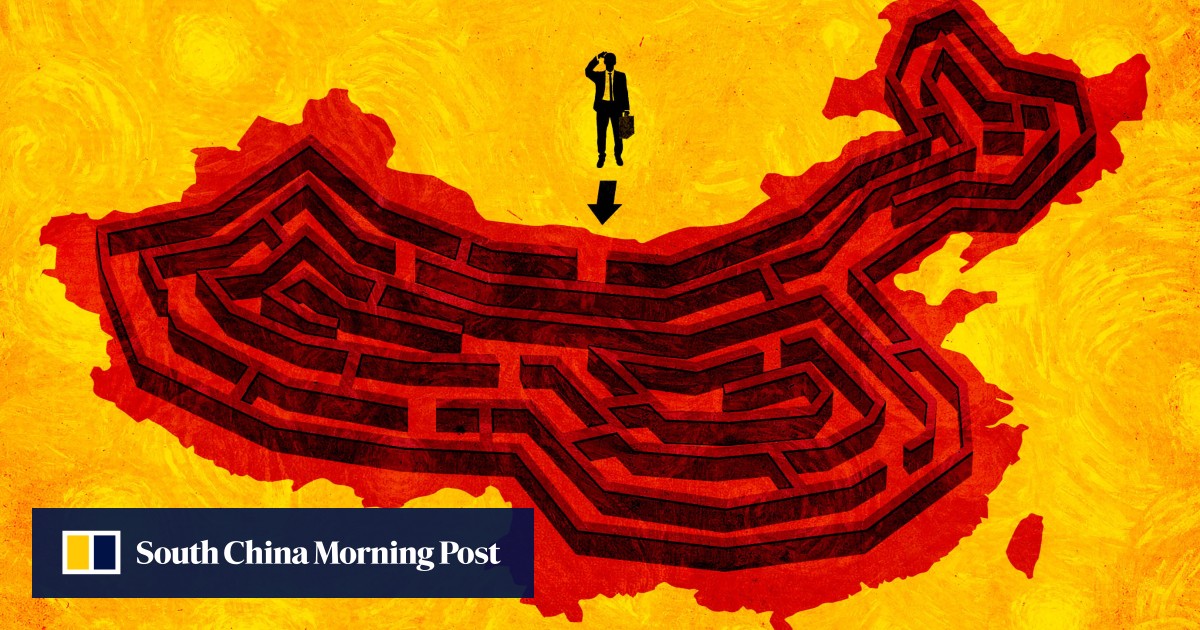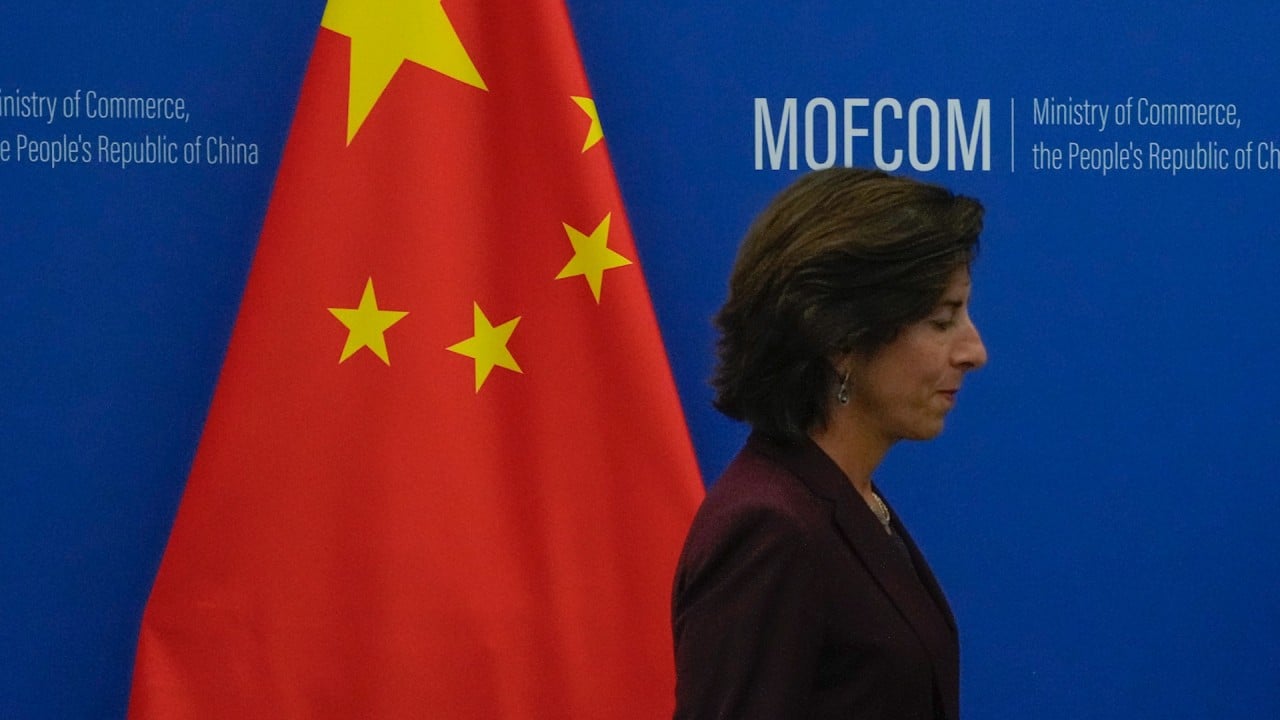“It means I can only open one restaurant in Shenzhen and where can I find seven other people I trust to apply [for permits] on my behalf?” Liang said.
She is now considering accepting her losses and pulling out of the venture as the outlook becomes unpalatable.
Strategically, China needs a promising domestic market now more than ever. As ties with the West – and therefore demand – wane amid the intensifying geopolitical rivalry and emerging decoupling, there has been a shift of some supply chains out of China, so the country has had to pivot inward.
In the past decade, Beijing has prioritised reducing the negative list, which states the areas where the government forbids or restricts foreign investment, and has put the business environment high on its agenda.
Unlike Japan, China must beware of complacence in tackling deflation
Unlike Japan, China must beware of complacence in tackling deflation
One visible sign of the progress made so far is that the negative list was shortened to 27 in 2023 – from 190 in 2013. Meanwhile the ranking for its business environment also jumped as it has become a key part of the local cadres’ appraisal kit.
However, the NDRC deputy director also acknowledged the stubborn existence of local protectionism and market fragmentation, as he pledged to advance the work in terms of market rules, flows of production factors and unified regulatory standards.
“Campaigns have been launched to address unlawful business preregistration requirements and rules that disqualify non-local entities from government procurement or tender processes,” he said.
For its next steps, China will implement fair competition review, update a unified market access negative list and bidding and tender rules, and launch a national complaint platform.
According to the scorecard released by Beijing-based think tank National Economic Research Institute, China’s marketisation index, which measures bigger market development on the scale from zero to 10, rose from 5.45 in 2008 to 6.72. It continued to improve on 2016 levels, but dropped slightly in 2019 on rising government intervention.
“We must realise that China’s market-oriented reform hasn’t yet been completed, despite remarkable progress in the past,” its author said in the report released in 2021.
The concept of a unified market jumped out in the Communist Party’s 2013 third plenum, one year after President Xi Jinping took the top party position. Involving such objectives like unified market access, fair competition and a free flow of production factors, it is one of the 60 reform tasks listed in a historic document that vowed to let the market play a decisive role.
If Beijing is going to dig its way out of its current economic hole, it needs to allow robust debate and enact concrete reforms
A detailed development guideline was then released in April 2022 to address fragmented production and resource use.
“If Beijing is going to dig its way out of its current economic hole, it needs to allow robust debate and enact concrete reforms,” said China Pathfinder, a joint project of Rhodium Group and the Atlantic Council to track the progress of economic reforms.
China’s market competition composite index rose to 3.76 in 2022 from the 2010 score of 1.4, while its direct investment openness index increased to 2.18 from 0.65 in the period. But both were far behind the open-economy average of above 6, according to its report released in early October.
Rui Meng, a professor of finance at the China Europe International Business School, said it all boiled down to implementation and resolve, as “sore points” had long been identified.
“Market entry barriers and unfair treatment have become more hidden,” he said.

One example cited is the slow progress in forming a national electricity market despite the NDRC’s bid to expedite reforms in 2022.
“Foreign and private ones still face discrimination and ‘glass barriers’ while fair competition law enforcers lack teeth,” he said.
Beijing believes that it has the potential of elevating the Chinese economy to a higher level once the domestic market is fully developed.
There are already lots of suggestions, including further relaxation of the household registration system, or hukou, to promote the flow of labour and talent across the country.
However, it remains a question of whether Beijing’s messages can be quickly translated into substantial actions on the ground.
‘No one dares to spend’: why China’s middle class is tightening its belt
‘No one dares to spend’: why China’s middle class is tightening its belt
It gave a particular boost for China to tap the vast overseas market – the country grasped the opportunity to become the world’s top exporter in 2009 and surpassed Japan in the next year to become the world’s second-largest economy.
Chinese exports with the United States and European Union, two traditional destinations for made-in-China products, were down 13.8 per cent and 11 per cent year on year respectively in the first 11 months of 2023.
Investments accounted for 1.6 percentage points of gross domestic product (GDP) growth in the first three quarters of last year, compared with 4.4 percentage points for consumption. Net exports dragged growth by 0.7 percentage points.
Issues that still jam the internal circulation are also faced by a wide cross-section of foreign firms, despite mantras that a huge domestic market can keep foreign firms on board and happy.
The British Chamber of Commerce in China flagged in its annual report earlier last year uneven local enforcement in areas like customs clearance waiting times and new data security law.
“[China needs to] ensure uniform enforcement across different provinces and cities,” the chamber urged.
A recent survey he conducted found untrammelled flow of data and capital topped the wish list of 300 foreign companies questioned, while half the respondents worried about vague and varying market access procedures.
China should continue to rectify and reconcile regulations and practices concerning market access and procurement qualifications that differentiate treatment to enterprises by their nationality or nature of ownership, he said.
Part of Beijing’s unified market plan is to encourage exporters grappling with declining orders to focus on the domestic front. But the response is mixed.
“Doing business in China means you have to cosy up to officials, who may still give you a cold shoulder,” said one Shenzhen-based exporter.
“It’s always simpler and more straightforward to deal with overseas partners and clients.”








